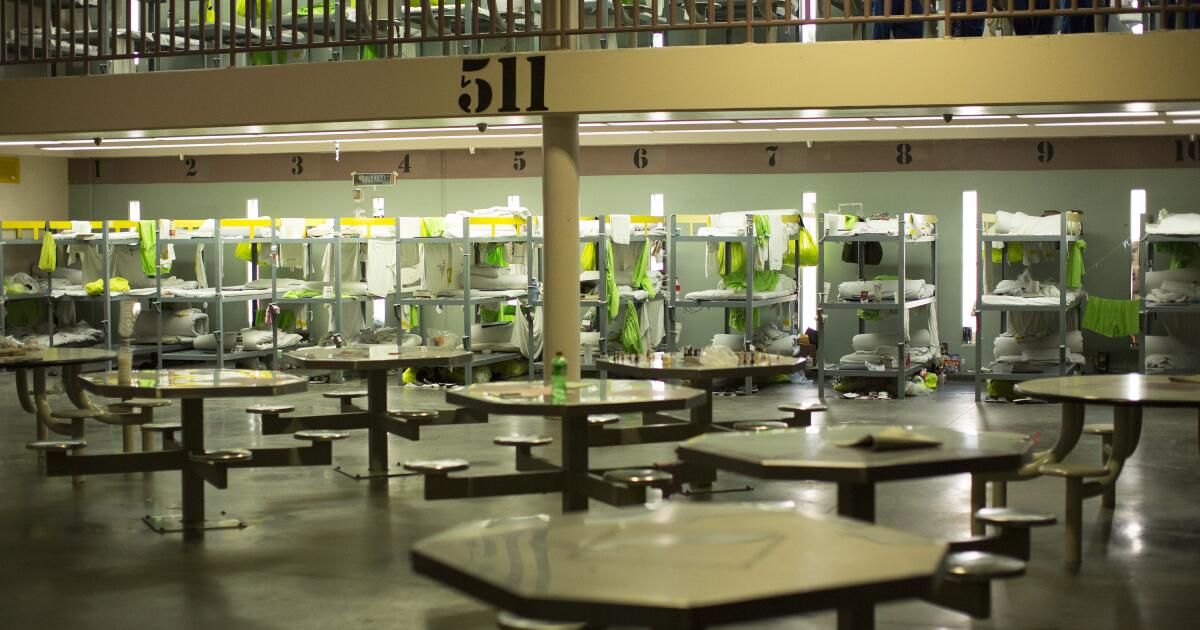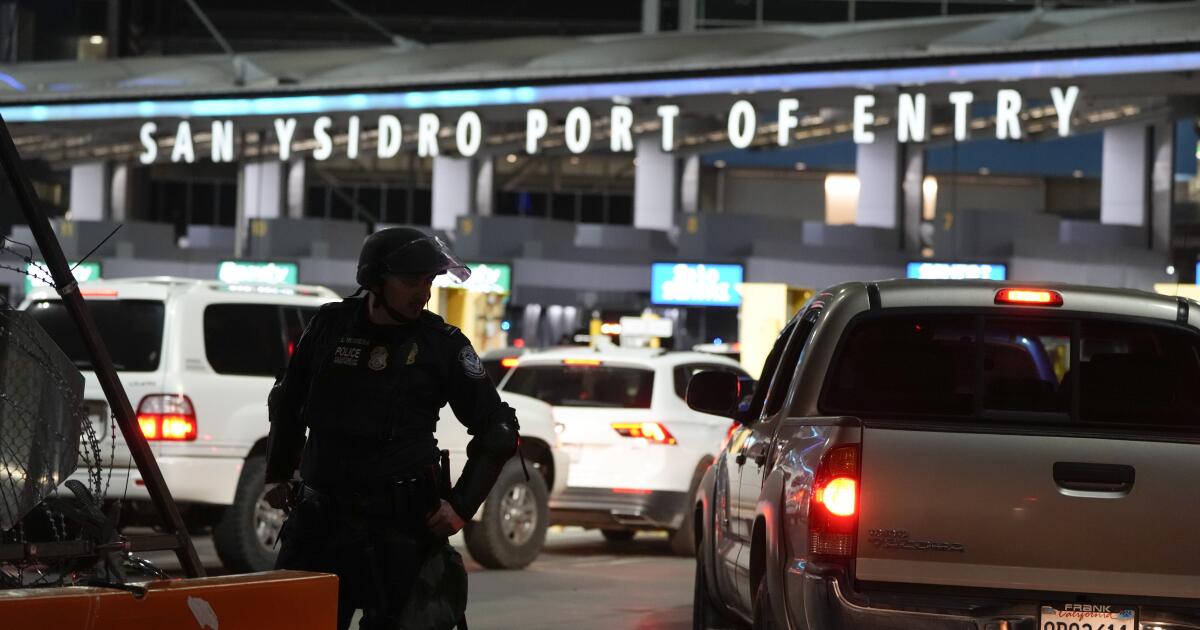A sheriff's deputy who was part of a task force focused on keeping Los Angeles County jails free of drugs and gang activity was arrested last week and charged with smuggling drugs into a county jail, according to booking records. and multiple police sources.
Michael Meiser, 39, was arrested on April 30. Jail records show he was booked on suspicion of an unspecified felony on May 1. Sheriff's Department records show Meiser worked at the North County Correctional Facility as an investigator. He worked with the jail's anti-gang unit, Operation Safe Prisons, according to two law enforcement sources who requested anonymity because they were not authorized to speak about the ongoing investigation.
One of those sources and another law enforcement official, who was also not authorized to speak publicly about the case, told The Times that Meiser was arrested for smuggling heroin into the Castaic prison complex.
Jail records show Meiser was cited and released without bail last week. He did not immediately respond to an emailed request for comment Tuesday and it was not clear if he had retained an attorney.
In an emailed statement Tuesday afternoon, Richard Pippin, president of the Association. from the Los Angeles sheriff's deputy, acknowledged the investigation but offered little other information.
“We are aware that there is an ongoing criminal investigation into one or more employees who work in our jails,” the statement said. “All law enforcement professionals are rightly held to a high standard both on and off duty. ALADS will wait until we have access to all the information revealed by the investigation before making further comments.”
A source said Meiser had been under surveillance for a long time and was allegedly observed buying heroin in Los Angeles before returning to jail, where he was arrested last week. The source described Meiser's arrest as part of a “broader operation” to combat drug use in prison.
A jail official said last week that the case was being handled by the department's Bureau of Internal Criminal Investigations, which investigates alleged crimes committed by department employees. On Tuesday, the Sheriff's Department would only confirm that investigators had arrested an employee on “felony charges” and that “the employee is relieved of duty pending the outcome of the case.”
Officials said the investigation is ongoing, adding that it will be presented to prosecutors “once the case is completed.”
A spokeswoman for the district attorney's office confirmed that the agency is aware of Meiser's arrest and has not yet been presented with the case for consideration of charges.
The primary goal of Operation Safe Jail is to combat “the criminal activities of inmate gang members” and deter gang activity, according to Sheriff's Department records.
In 2013, agents with the Operation Safe Prisons program were among those accused of trying to hide a jailhouse informant from FBI officials who were using him to investigate prison abuses and corruption. The deception and cover-up that followed ultimately landed former Sheriff Lee Baca and several others in federal prison.
Los Angeles County is battling a surge in jail deaths, many of them related to drug use. Last year, department officials said that of 45 inmate deaths in the jails, a dozen were drug-related, more than double the number a decade earlier, when the prison population was much larger.
In recent years, several of those deaths have occurred at the county's North Jail complex. Last year, a quarterly oversight report showed that jailers skipped several required security checks before discovering an inmate who had overdosed. Records show jailers only learned of the medical emergency after other inmates asked them for help.
When a 29-year-old collapsed at the North County Correctional Facility in 2022, other inmates tried to save him by giving him naloxone, an overdose-reversing medication. After his death, officials discovered that surveillance footage had captured him carrying a makeshift syringe onto his bunk and asking another inmate to help him inject it into his neck, according to autopsy records.
Officers also later reported seeing him inject drugs on camera a few weeks before his death, but records do not make clear how he could have obtained the drugs in the first place.
To combat the problem, officials in the previous administration made naloxone available by mounting the nasal spray on jail walls. In recent months, department officials have repeatedly touted the need for better body scanners to screen inmates for drugs, a solution that would not necessarily address the problem of drug smuggling among sworn personnel.
Times staff writer Richard Winton contributed to this report.












